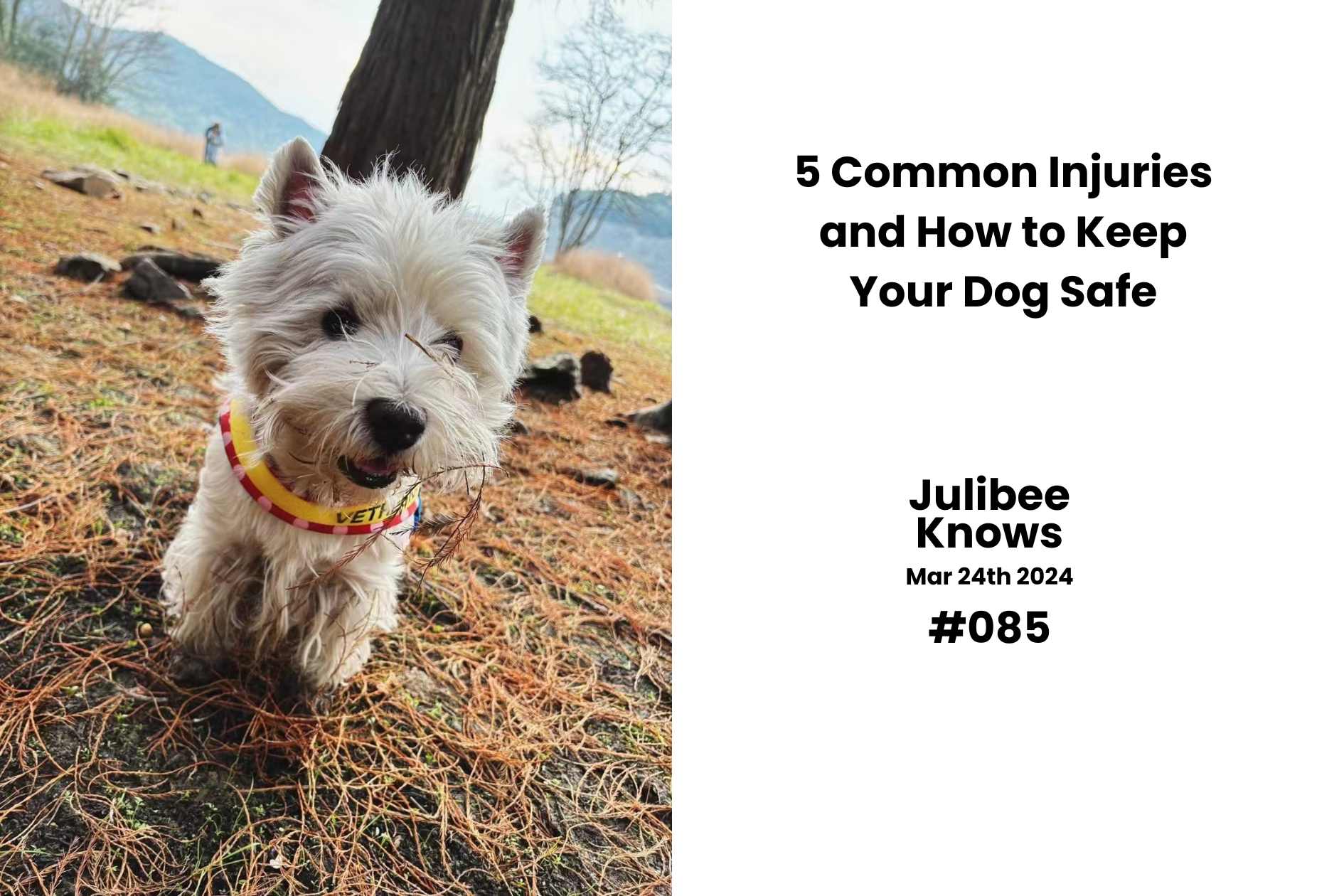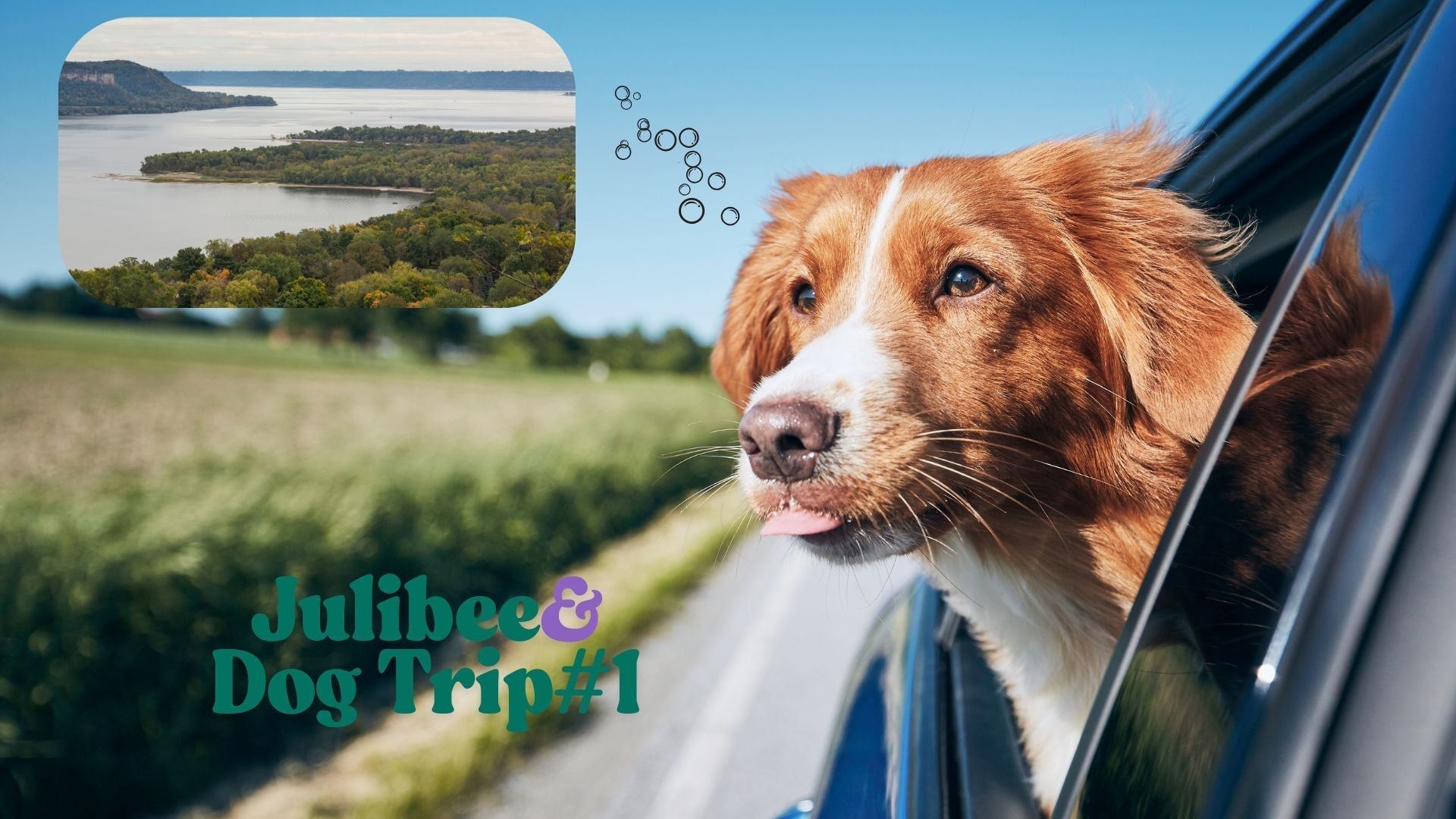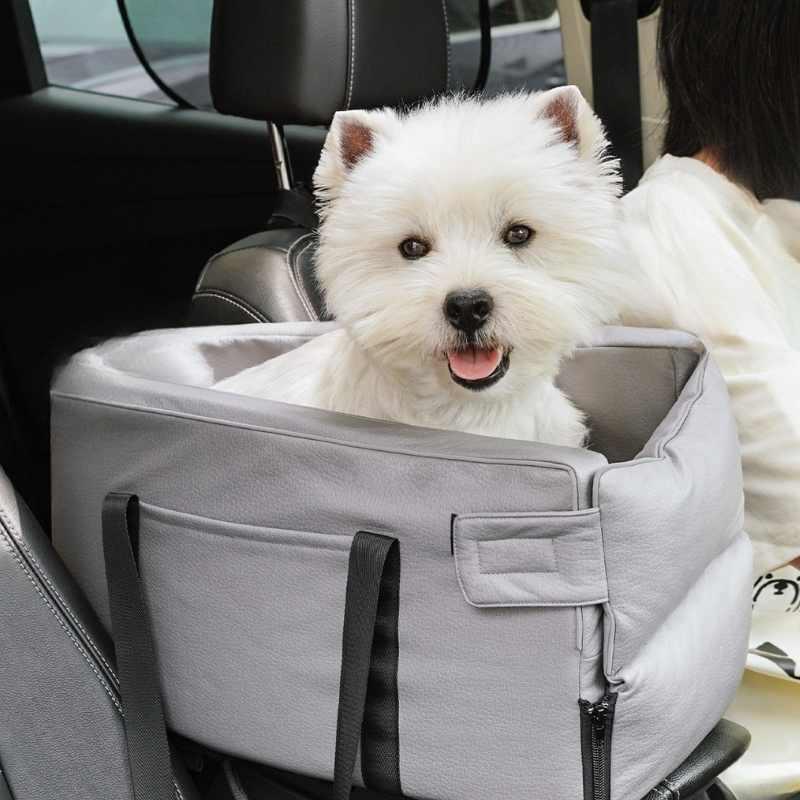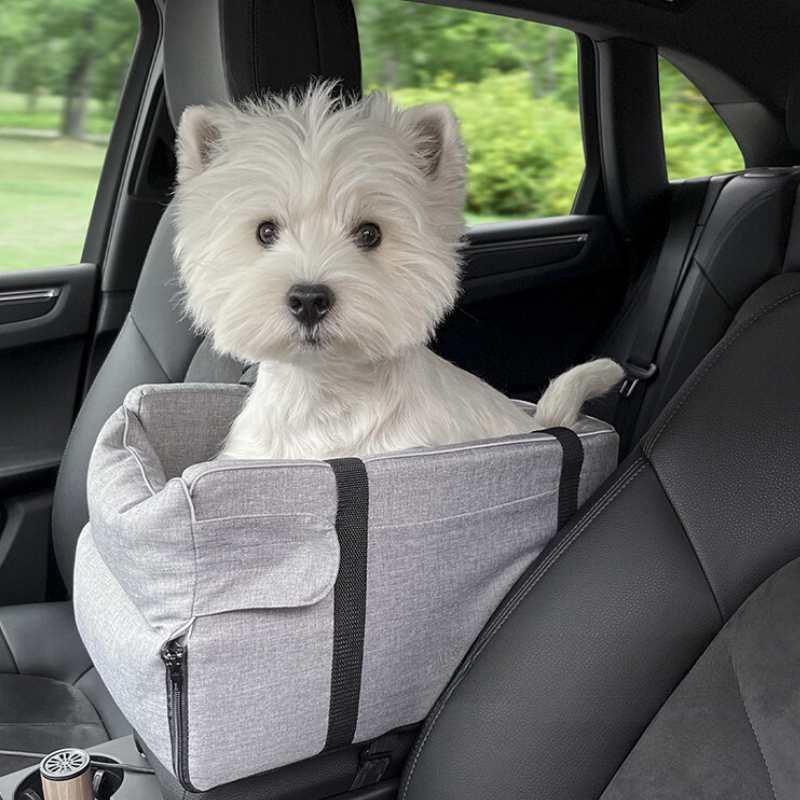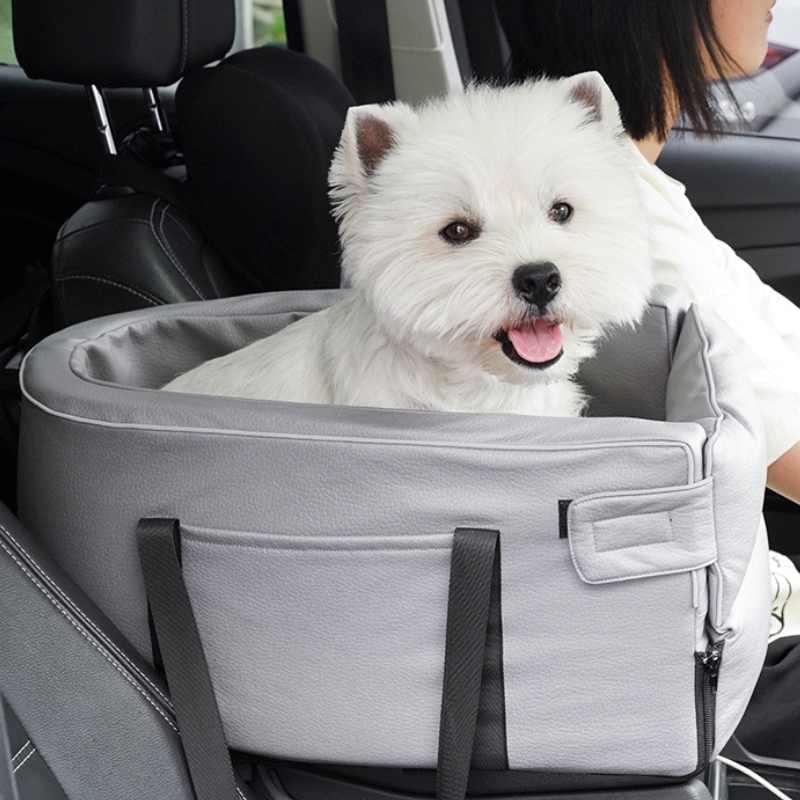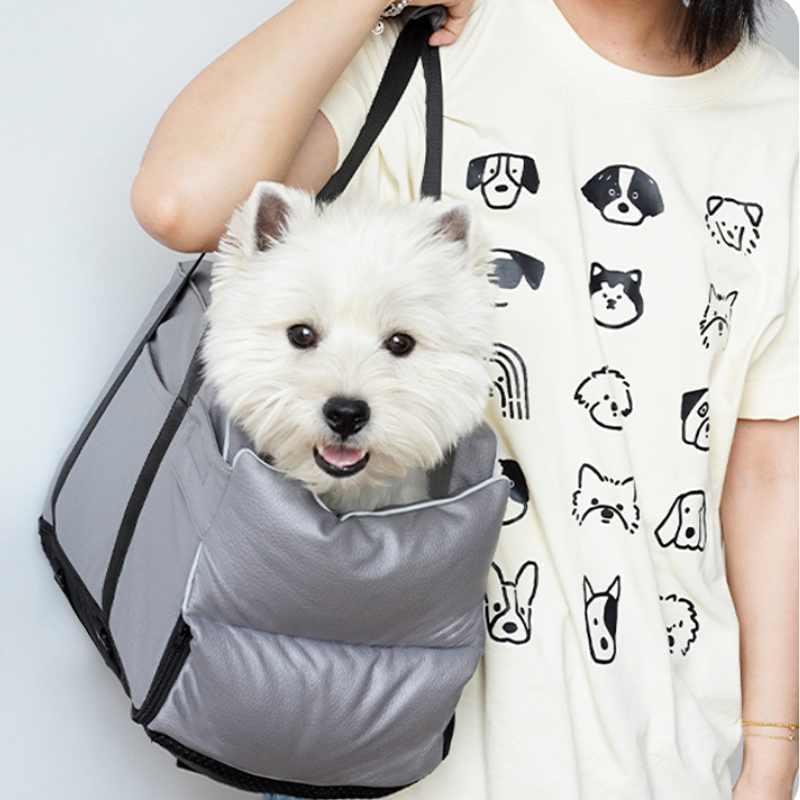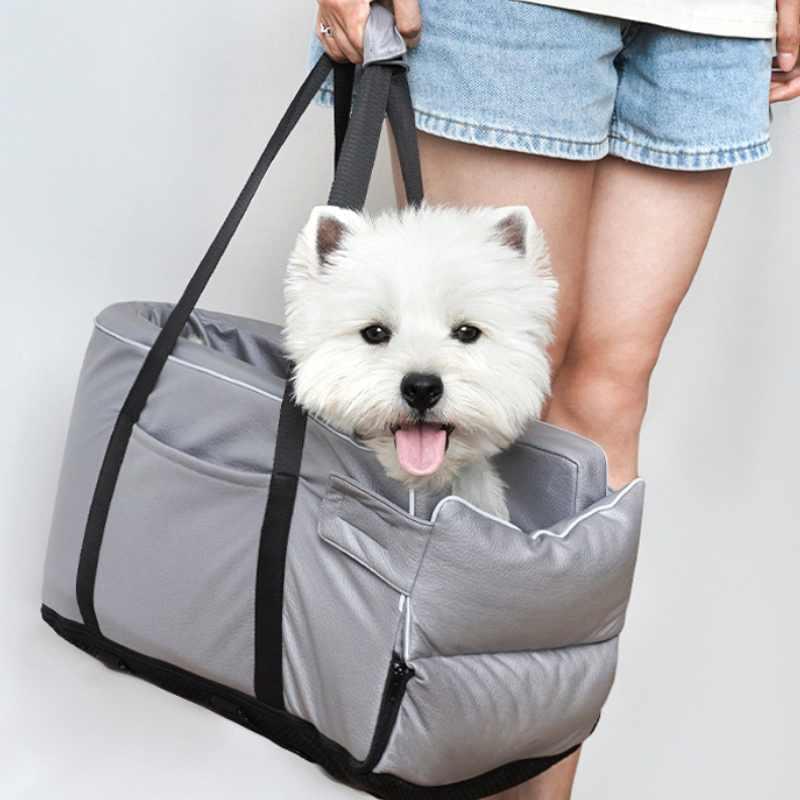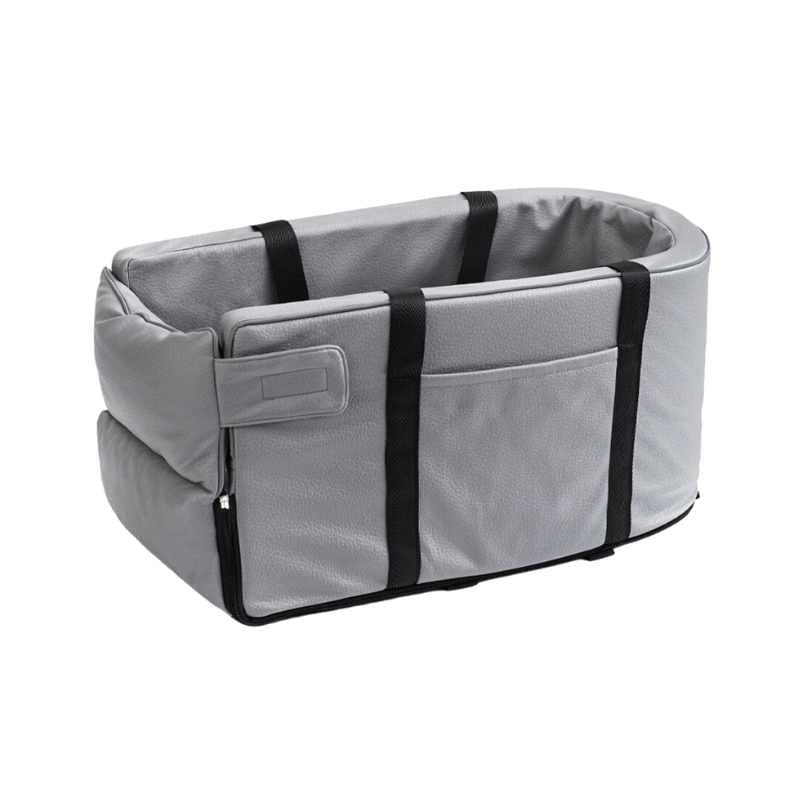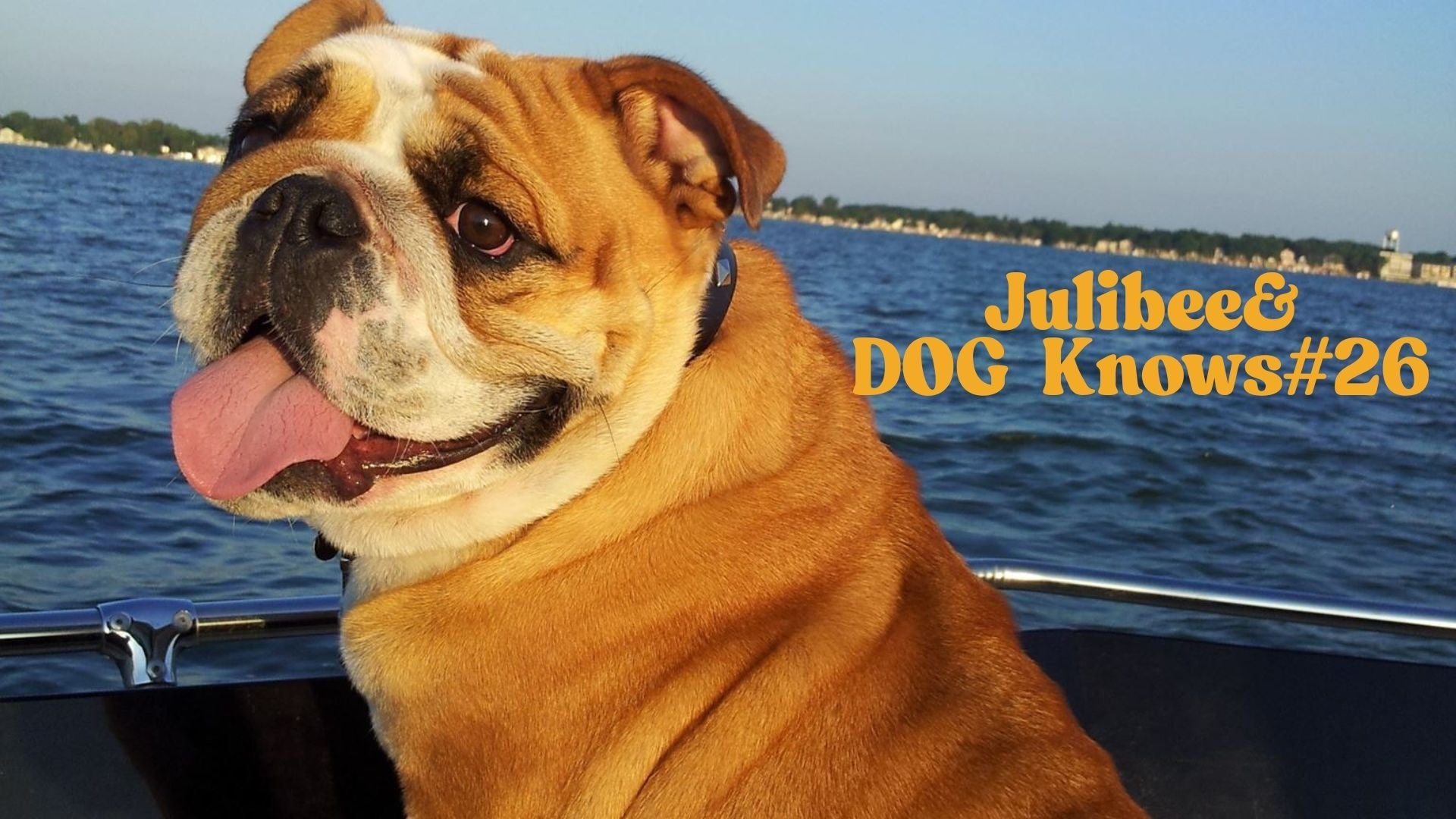
Die Psyche Ihres Hundes unterwegs verstehen: Ein Leitfaden zur Tierpsychologie für glückliche Reisen
Dieser Leitfaden untersucht die psychologischen Faktoren, die Hunde während der Reise beeinflussen, und behandelt Ängste in neuen Umgebungen, soziale Interaktionen, Langeweile, Reisekrankheit und Reaktionen auf Hotels.
Inhaltsverzeichnis
- Die Psyche Ihres Hundes unterwegs verstehen: Ein Leitfaden zur Tierpsychologie für glückliche Reisen
- 1. Die Angst vor dem Unbekannten: Navigation in neuen Umgebungen
- 2. Steuerung sozialer Interaktionen und territorialer Instinkte
- 3. Langeweile und aufgestaute Energie bekämpfen
- 4. Umgang mit Reisekrankheit und Unwohlsein
- 5. Reaktionen auf neue Hotelumgebungen verstehen
- Abschluss
Einen vierbeinigen Begleiter an der Seite zu haben, weckt oft den unwiderstehlichen Drang, ihn auf Abenteuer mitzunehmen. Reisen mit dem Hund kann Ihre Reisen tatsächlich ungemein bereichern. Ich erinnere mich gern an meinen eigenen Bulldoggen Max, der mich auf vielen Reisen begleitet hat. Durch diese Erfahrungen und mein tieferes Verständnis der Tierpsychologie habe ich wichtige Aspekte gelernt, um unseren pelzigen Freunden eine angenehme und sichere Reise zu ermöglichen – und auch für unsere eigene Seelenruhe. Lassen Sie uns die wichtigsten psychologischen und verhaltensbezogenen Aspekte beim Reisen mit Hund näher betrachten.

1. Die Angst vor dem Unbekannten: Navigation in neuen Umgebungen
Hundepsychologie
Hunde sind Gewohnheitstiere und hängen stark an vertrauten Gerüchen und Revieren. Dieser starke Territorialinstinkt ist der Grund, warum ungewohnte Umgebungen für sie beunruhigend sein können. Sie befürchten möglicherweise instinktiv, dass diese neuen Räume bereits von dominanteren Hunden beansprucht werden. Ob Hotelzimmer, fremde Straßen oder andere Verkehrsmittel – diese neuen Umgebungen können aufgrund des mangelnden Sicherheitsgefühls Angst- und Stressreaktionen auslösen.
Verhaltenszeichen
- Übermäßiges Bellen : Überreaktion auf neue Geräusche, Gerüche oder visuelle Reize in einer ungewohnten Umgebung.
- Winseln oder Heulen: Ausdruck von Unbehagen oder Angst oder Suche nach Bestätigung und Aufmerksamkeit bei ihrem Besitzer.
- Auf und ab gehen oder Ruhelosigkeit: Unfähigkeit, zur Ruhe zu kommen, ständiges Herumlaufen im Raum in einem Zustand der Aufregung.
- Appetitlosigkeit: Weigerung zu essen aufgrund von Nervosität und Stress in der neuen Umgebung.
- Verstecken: Suchen Sie Zuflucht in kleinen, geschlossenen Räumen wie unter dem Bett oder hinter Möbeln, um sich sicher zu fühlen.
- Destruktives Verhalten: An Möbeln kauen oder an Türen und Fenstern kratzen, um angestauten Stress und Ängste abzubauen.
- Unangemessene Ausscheidung: Urinieren oder Defäkieren außerhalb der üblichen dafür vorgesehenen Stellen aufgrund von Stress oder Desorientierung.
Bewältigungsstrategien
- Gewöhnung vor der Reise: Gewöhnen Sie Ihren Hund mindestens 3–7 Tage vor der Reise langsam an die Transportbox (egal ob Hartbox oder Weichbox). Legen Sie seine Lieblingsspielzeuge und -decken hinein und ermutigen Sie ihn, kurze Zeit darin zu verbringen, um positive Assoziationen aufzubauen.
- Bringen Sie vertraute Annehmlichkeiten mit: Packen Sie das gewohnte Bett oder die Decke Ihres Hundes und ein paar seiner liebsten Spielzeuge ein. Diese vertrauten Gerüche und Gegenstände vermitteln ein Gefühl von Sicherheit und Normalität an einem neuen Ort.
- Schaffen Sie ein „Zuhause fern von Zuhause“: Legen Sie im Hotelzimmer eine bestimmte Ecke als Bereich für Ihren Hund fest, indem Sie seine Decke und sein Spielzeug dort platzieren. So schaffen Sie eine vertraute und sichere Zone für ihn.
- Pheromonsprays: Verwenden Sie beruhigende Pheromonsprays (DAP) in den dafür vorgesehenen Bereichen und in der Transportbox. Diese synthetischen Pheromone imitieren die von der Mutterhündin produzierten Pheromone und können eine beruhigende Wirkung haben.
- Routine einhalten: Halten Sie sich so weit wie möglich an den regelmäßigen Fütterungs- und Toilettenplan Ihres Hundes. Diese Vorhersehbarkeit trägt dazu bei, ein Gefühl der Normalität zu schaffen und Ängste abzubauen.
- Sanfte Beruhigung: Wenn Ihr Hund Anzeichen von Unruhe zeigt, beruhigen Sie ihn mit Worten und streicheln Sie ihn sanft. Vermeiden Sie jedoch übermäßiges Getue, da dies sein ängstliches Verhalten unbeabsichtigt verstärken kann.
- Allmähliche Erkundung: Lassen Sie Ihren Hund nach der Ankunft an Ihrem Zielort zunächst an das Hotelzimmer gewöhnen, bevor Sie ihn schrittweise und kontrolliert an die Umgebung gewöhnen.
2. Steuerung sozialer Interaktionen und territorialer Instinkte
Hundepsychologie
Hunde unterscheiden sich erheblich in ihrem Sozialisationsgrad. Auf Reisen begegnen sie häufig vielen fremden Hunden und Menschen. Für Hunde, die nicht gut sozialisiert sind oder einen ausgeprägten Territorialinstinkt besitzen, können diese Interaktionen eine Herausforderung darstellen. Sie reagieren möglicherweise defensiv oder ängstlich, um ihren Besitzer oder ihr temporäres „Revier“ zu schützen.
Verhaltenszeichen
- Bellen und Knurren gegenüber anderen Hunden oder Menschen: Kommunizieren einer wahrgenommenen Bedrohung, eines Unbehagens oder einer Abwehrhaltung.
- Aufgerichtetes Nackenfell und steife Körperhaltung: Körperliche Anzeichen von Anspannung, Angst oder Aggressionsbereitschaft.
- Sich auf andere Hunde oder Menschen stürzen oder in sie hineinziehen: Ausdruck von Frustration und erhöhter Erregung, während das Tier an der Leine geführt wird.
- Verstecken oder Rückzug: Anzeichen von Angst, Misstrauen und dem Wunsch, Interaktion zu vermeiden.
Bewältigungsstrategien
- Halten Sie Sicherheitsabstand: Führen Sie Ihren Hund in öffentlichen Bereichen immer an der Leine und halten Sie einen angenehmen Abstand zu anderen Hunden und Menschen, um unerwünschte Interaktionen zu vermeiden. Ich erinnere mich, wie Max und ein Labrador einmal anfingen, sich gegenseitig heftig anzubellen. Das Beste, was man tun konnte, war, Max einfach weiter weg zu führen und den direkten Blickkontakt zu unterbrechen.
- Beobachten Sie die Körpersprache: Lernen Sie, die subtilen Signale zu erkennen, die darauf hinweisen, dass Ihr Hund gestresst, ängstlich oder aggressiv ist (z. B. eingezogener Schwanz, angelegte Ohren, Walauge, Lippenkräuseln). Entfernen Sie ihn umgehend aus Situationen, die ihm Unbehagen bereiten.
- Sozialisierung priorisieren: Sorgen Sie dafür, dass Ihr Hund von klein auf ausreichend sozialisiert wird, indem Sie ihn auf positive und kontrollierte Weise mit einer Vielzahl von Menschen und freundlichen Hunden in Kontakt bringen.
- Positive Verstärkung: Belohnen Sie ruhiges und freundliches Verhalten Ihres Hundes mit Leckerlis und Lob, wenn er auf Fremde oder andere Hunde trifft. So verbindet er diese Begegnungen mit positiven Erfahrungen.
- Respektieren Sie ihre Grenzen: Zwingen Sie Ihren Hund niemals, mit Menschen oder anderen Hunden zu interagieren, in deren Nähe er sich offensichtlich unwohl fühlt.
3. Langeweile und aufgestaute Energie bekämpfen
Hundepsychologie
Reisen stören oft den normalen Bewegungsablauf eines Hundes, insbesondere wenn er in einem Hotelzimmer eingesperrt ist. Dieser Mangel an körperlicher und geistiger Anregung kann zu Langeweile, Frustration und der Entwicklung unerwünschter Verhaltensweisen führen.
Verhaltenszeichen
- Hyperaktivität und Unfähigkeit, zur Ruhe zu kommen: Ruheloses Auf- und Abgehen, Unfähigkeit, sich zu entspannen oder sich in dem engen Raum ruhig hinzulegen.
- Übermäßige Lautäußerungen: Bellen, um Aufmerksamkeit zu erregen oder einfach als Ventil für ungenutzte Energie.
- Zerstörerische Tendenzen: Kauen an Hotelmöbeln wie Fernbedienungen, Bettzeug oder Teppichen.
- Ständige Aufmerksamkeitssuche: Stupsen, Scharren oder häufiges Bringen von Spielzeug zum Besitzer.
Bewältigungsstrategien
- Bewegung im Freien priorisieren: Sorgen Sie dafür, dass Ihr Hund täglich ausreichend Gelegenheit zum Spazierengehen und Laufen hat, insbesondere nach der Ankunft am Zielort. Suchen Sie nach nahegelegenen Hundeparks oder haustierfreundlichen Außenbereichen.
- Packen Sie spannende Spielzeuge ein: Bringen Sie die Lieblingsspielzeuge Ihres Hundes mit, wie beispielsweise Frisbee, Bälle oder Kauspielzeuge, um ihn bei sicheren Ausflügen ins Freie zum Spielen zu animieren.
- Interaktives Spielzeug und Puzzle-Spielzeug: Stellen Sie geistig anregendes Spielzeug wie Puzzle-Futterspender oder Leckerli-Spender-Spielzeug zur Verfügung, um Ihr Kind zu beschäftigen und zu unterhalten, wenn Sie beschäftigt sind.
- Kurze Trainingseinheiten: Nutzen Sie die Ruhezeiten während der Reise für kurze Gehorsamsübungen (z. B. „Sitz“, „Bleib“, „Platz“). Diese geistige Beschäftigung kann auch dazu beitragen, den Hund zu ermüden.
4. Umgang mit Reisekrankheit und Unwohlsein
Hundepsychologie
Die Bewegung von Autos oder Flugzeugen kann für manche Hunde eine unangenehme Erfahrung sein. Reisekrankheit, ungewohnte Geräusche, das Eingesperrtsein in engen Räumen und die Trennung von ihren Besitzern können zu erheblichem Stress beitragen.
Verhaltenszeichen
- Reisekrankheit: Übermäßiges Sabbern, Erbrechen und Lethargie.
- Angst und Stress: Schweres Hecheln, Winseln, Bellen und allgemeine Unruhe.
- Fluchtversuche: Versuche, aus der Transportbox oder den Sicherheitsgurten auszubrechen.
Bewältigungsstrategien
- Allmähliche Gewöhnung ans Reisen: Machen Sie vor einer langen Reise kurze Autofahrten mit Ihrem Hund, damit er sich an die Bewegung gewöhnt. Bei Flugreisen sollte er sich rechtzeitig an die Transportbox gewöhnen.
- Sorgen Sie für eine gute Belüftung: Sorgen Sie für ausreichende Luftzirkulation im Auto und vermeiden Sie eine Überhitzung.
- Sorgen Sie für einen bequemen Platz: Legen Sie die Tragetasche oder den Autositz Ihres Babys mit vertrauten Decken aus und sorgen Sie dafür, dass es genügend Platz hat, um bequem hinzulegen.
- Vermeiden Sie Überfütterung vor der Reise: Geben Sie Ihrem Hund 2–3 Stunden vor der Abreise eine leichte Mahlzeit, um das Risiko einer Reisekrankheit zu minimieren.
- Häufige Pausen: Halten Sie bei langen Autofahrten regelmäßig an, damit Ihr Hund sich die Beine vertreten und seine Notdurft verrichten kann.
- Fragen Sie Ihren Tierarzt: Wenn Ihr Hund in der Vergangenheit unter schwerer Reisekrankheit gelitten hat, fragen Sie Ihren Tierarzt nach möglichen Medikamenten gegen Übelkeit.
- Sichern Sie Ihren Hund richtig: Verwenden Sie bei Reisen mit dem Auto oder Flugzeug immer einen Sicherheitsgurt für Haustiere oder eine sichere Transportbox.
5. Reaktionen auf neue Hotelumgebungen verstehen
Hundepsychologie
Die ungewohnten Gerüche, Texturen und die Einrichtung eines Hotelzimmers können bei Hunden Neugier, Unbehagen oder erhöhte Wachsamkeit auslösen.
Verhaltenszeichen
- Übermäßiges Schnüffeln: Ständiges Untersuchen jeder Ecke und Oberfläche des neuen Zimmers.
- Erhöhte Geräuschempfindlichkeit: Bellen bei ungewohnten Geräuschen wie Türklingeln oder Aufzugsgeräuschen.
- Zurückhaltung gegenüber Fremden: Misstrauen oder sogar Aggressivität gegenüber Reinigungspersonal oder anderen Personen, die den Raum betreten.
- Zögern auf unbekannten Oberflächen: Wirkt unsicher oder widerwillig, wenn es darum geht, auf glatten oder ungewöhnlichen Böden zu gehen.
Bewältigungsstrategien
- Beschränken Sie unbeaufsichtigtes Herumstreunen: Wenn Sie nicht in der Lage sind, Ihren Hund direkt zu beaufsichtigen, sperren Sie ihn in seine Transportbox oder einen dafür vorgesehenen Bereich im Zimmer.
- Verwenden Sie ein „Bitte nicht stören“-Schild: Verhindern Sie, dass das Hotelpersonal das Zimmer betritt, wenn Ihr Hund allein ist.
- Gewöhnen Sie Ihren Hund allmählich an die Oberflächen: Wenn der Hotelboden rutschig oder ungewohnt ist, legen Sie die Decke Ihres Hundes darauf, um ihm einen bequemeren und sichereren Stand zu bieten.
- Sorgen Sie dafür, dass immer frisches Wasser zur Verfügung steht: Die neue Umgebung kann dazu führen, dass Ihr Hund durstiger ist als sonst.
Abschluss
Indem wir die psychologischen Bedürfnisse und möglichen Verhaltensreaktionen Ihres Hundes während der Reise besser verstehen, können wir effektivere Präventionsmaßnahmen und Bewältigungsstrategien entwickeln. Dieser proaktive Ansatz stellt sicher, dass unsere geliebten Begleiter auf unseren Abenteuern glücklich und gesund bleiben, sodass wir beide die Reise in vollen Zügen genießen können. Die subtilen Signale Ihres Hundes zu beobachten, geduldig zu reagieren und auf seine individuellen Bedürfnisse vorbereitet zu sein, sind die Grundpfeiler einer erfolgreichen Reise mit Ihrem Haustier.
Kurze Beschreibung
Die perfekte Lösung für Eltern kleiner Hunde, die ihre pelzigen Freunde mit dem Auto auf Reisen nehmen möchten.
Unser Hundeautositz mit Konsole (Armlehne) sorgt nicht nur dafür, da..
